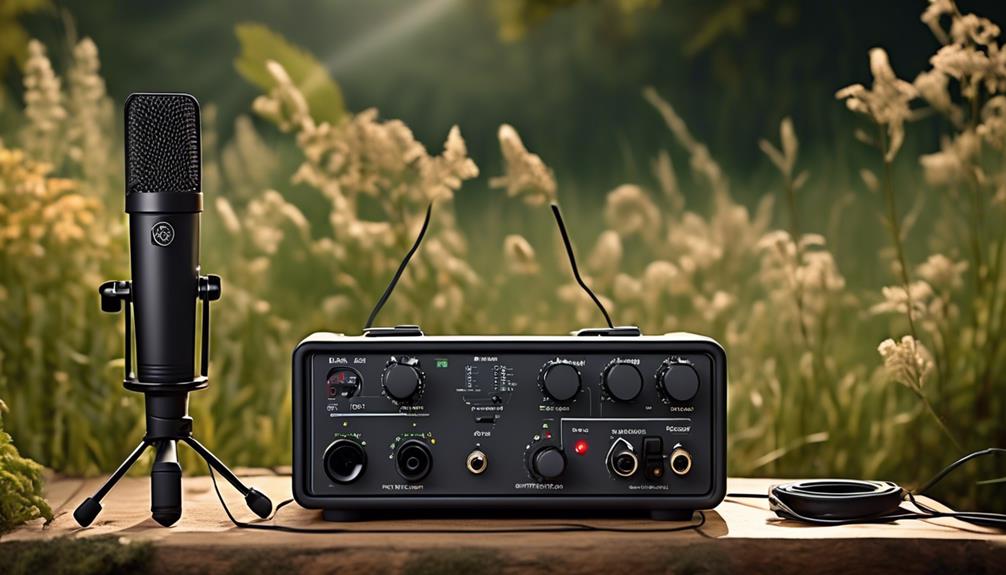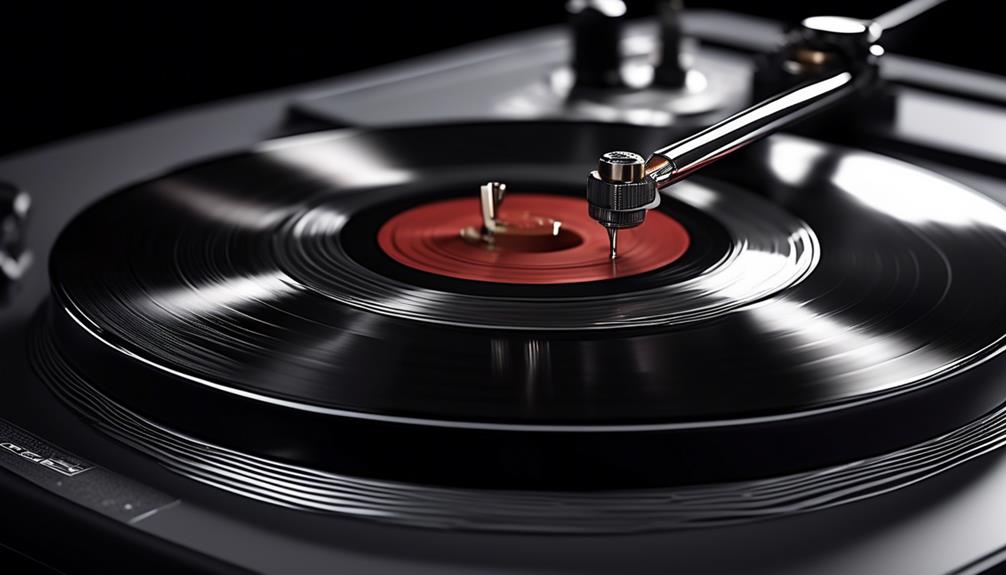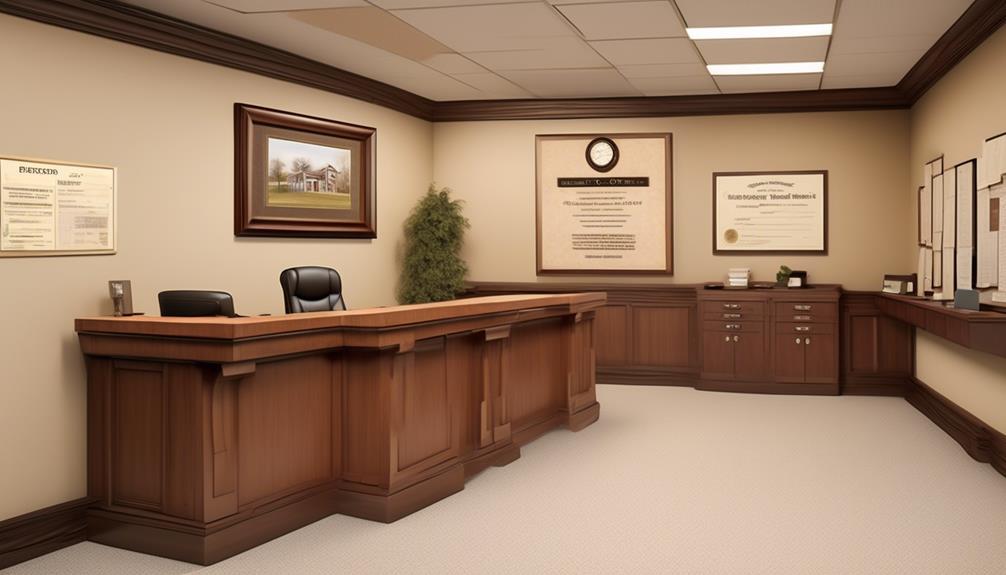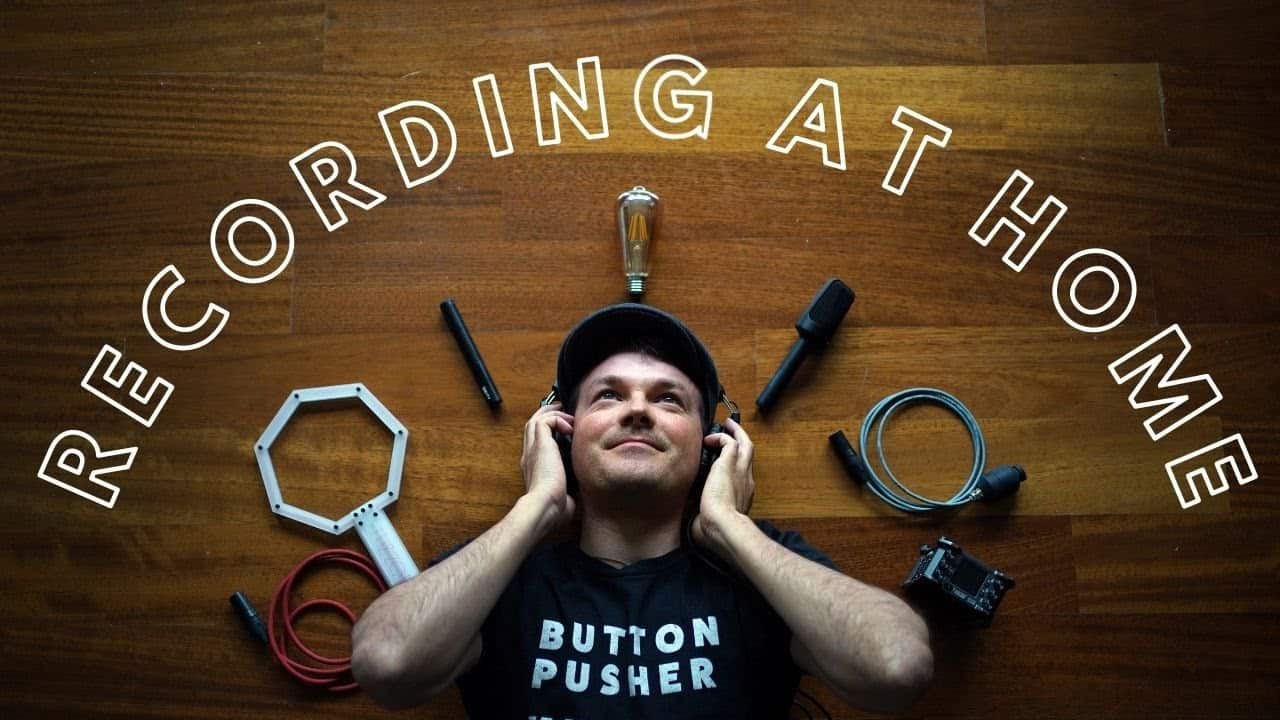As we explore the realm of field recording, we are at a pivotal moment, wondering which sample rate is most suitable for capturing the true essence of the surroundings.
The choice of sample rate can significantly impact the quality and versatility of our recordings, and it's a decision that warrants careful consideration. With a multitude of factors at play, from the nuances of sound manipulation to the limitations of our recording equipment, the quest for the ideal sample rate for field recording is a journey that promises to unravel an array of insights and considerations.
Key Takeaways
- Sample rate is measured in kilohertz (kHz) and higher sample rates like 96 kHz or 192 kHz capture frequencies beyond human hearing range.
- Higher sample rates greatly impact audio quality in sound design and field recordings by capturing a broader range of frequencies and preserving nuances and details of natural sounds.
- Choosing the appropriate sample rate is crucial for capturing ambient sounds and ensuring high audio quality in field recording.
- Common sample rates in field recording include 44.1 kHz, 48 kHz, and 96 kHz, with each being suitable for different types of projects and desired outcomes.
Understanding Sample Rate Basics
Let's delve into the fundamental concepts of sample rate and its significance in audio recording. The sample rate, measured in kilohertz (kHz), determines the number of samples of audio carried per second.
A lower sample rate, such as 44.1 kHz, captures frequencies up to 20 kHz, suitable for music projects. In contrast, higher sample rates, like 96 kHz or 192 kHz, extend the frequency range, capturing frequencies beyond the human hearing range. This is particularly beneficial for sound design and field recordings, where high-frequency sounds may be present.
When considering sample rates, it's essential to also take into account the bit depth, with 24-bit being the preferred choice due to its wider dynamic range and better signal-to-noise ratio.
Additionally, the choice of sample rate should align with the final destination of the audio, such as 48 kHz for audio-for-video work and 44.1 kHz for CD releases.
Understanding sample rate basics empowers us to make informed decisions, especially in the context of field recordings, where capturing a wide frequency range is crucial for achieving high-quality results.
Impact of Sample Rate on Audio Quality

Higher sample rates, such as 88.2 kHz, 96 kHz, and 192 kHz, greatly impact the audio quality, especially in sound design, SFX, ambience, and sample library recordings, by enabling better results and reducing artifacts during time stretching, tempo changes, and pitch shifts.
When recording at higher sample rates, a broader range of frequencies, especially in the high frequencies, can be captured, resulting in a more accurate representation of the sound. This is particularly beneficial for field recording, where capturing the full spectrum of ambient sounds is crucial for creating immersive experiences. Furthermore, higher sample rates can preserve the nuances and details of natural sounds, enhancing the overall audio quality.
In addition, high sample rates contribute to minimizing the noise floor, which is especially important when capturing quiet or distant sounds in field recording scenarios. The increased bit depth offered by higher sample rates allows for greater precision in representing the dynamics of a sound, further enhancing the audio quality.
It's important to note that in the audible range, the benefits of higher sample rates mightn't be as discernible to all listeners, but for professionals engaged in field recording, the impact on audio quality can be significant.
Choosing the Right Sample Rate for Field Recording
For field recording, selecting the appropriate sample rate is crucial for capturing the full spectrum of ambient sounds and ensuring high audio quality. When choosing the right sample rate for field recording, it's essential to consider the specific project requirements and the capabilities of human hearing. The sampling rate directly impacts the fidelity and flexibility of the recorded audio, influencing the potential for sound design and the overall quality of the final result. To assist in understanding the implications of different sample rates, we've compiled a comparison table below to aid in making an informed decision for your field recording endeavors.
| Sample Rate (kHz) | Project Type | Ideal Use Cases |
|---|---|---|
| 44.1 | Music-only projects | Electric instruments |
| 48 | Film projects | Field recordings for SFX and ambiences |
| 96 | Sound design | SFX, ambient recordings |
| 192 | Sound design | Extreme sample manipulation |
| 88.2, 192 | Specialized | Underwater and exceptional spaces |
Understanding the relationship between sample rates and the desired outcome is vital for achieving the best results in field recording and sound design.
Common Sample Rates in Field Recording

When determining common sample rates for field recording, it's essential to consider the specific project requirements and the intended use of the recorded audio. In the realm of field recording, various sample rates are commonly employed to cater to different needs. Understanding the common sample rates in field recording is crucial for achieving optimal results and ensuring compatibility with modern audio equipment and digital audio files.
Here are some common sample rates to consider:
- 44.1 kHz: Suitable for music-only projects with electric or electronic instruments.
- 48 kHz: Recommended for film projects, library music, and certain field recordings for sound effects (SFX) and ambiences.
- 96 kHz: Preferred for sound design, SFX, ambience, and sample library recordings requiring pitch and time manipulation.
These sample rates play a pivotal role in capturing higher frequencies and nuances in the audio, especially in the context of field recording. Additionally, it's important to take into account the processing power and storage requirements associated with higher sample rates, as well as the intended distribution platforms such as a YouTube channel.
Best Practices for Selecting Sample Rates
Understanding the common sample rates in field recording is crucial for achieving optimal results and ensuring compatibility with modern audio equipment and digital audio files. It's equally important to consider best practices for selecting sample rates.
When working with audio, the choice of sample rate and bit depth is essential. For higher sample rates, such as 88.2 kHz and 192 kHz, it's important to consider the benefits they offer. These benefits include capturing underwater sounds, revealing artifacts, smoother time stretching, and specific frequency manipulation. However, it's crucial to remember that higher sample rates also require more hard drive space.
Additionally, it's recommended to use 24-bit for better dynamic range, except for low dynamic range music intended for CD, which can be recorded at 16-bit. It's also vital to be aware of aliasing, which occurs when working with higher sampling rates.
When choosing a sample rate, it's essential to consider the application's compatibility, equipment capabilities, and the final destination's specifications. By following these best practices, one can make informed decisions when selecting sample rates for field recording.
Frequently Asked Questions
Is 44.1 or 48 Better for Recording?
For recording, 48 kHz is better due to its compatibility with film projects and field conditions. However, equipment limitations and storage capacity should be considered.
48 kHz provides higher audio quality and better compatibility with signal processing, digital conversion, and technical specifications. It also minimizes analog artifacts and environmental noise.
In contrast, 44.1 kHz may have limitations in professional field recording due to lower sample rate, affecting audio quality and compatibility with advanced processing.
What Is the Best Sample Rate for Recording?
We thought we'd the perfect sample rate for field recording until we factored in portable devices, environmental factors, microphone sensitivity, post production needs, equipment compatibility, field conditions, signal integrity, recording duration, storage capacity, and audio quality.
Now we're considering how these elements influence the best sample rate.
It's clear that choosing the right sample rate involves a detailed analysis of all these variables to achieve the optimal recording quality.
Is 48kHz Better Than 192khz?
48kHz and 192kHz have different strengths.
48kHz offers sufficient signal resolution and audio fidelity, suitable for most field conditions and equipment compatibility. It's an industry standard and requires less data storage.
On the other hand, 192kHz captures high frequencies with more detail, aiding in analog conversion and digital processing, resulting in superior playback quality.
Understanding these distinctions helps in selecting the best sample rate for specific field recording needs.
Is 192kHz 24 Bit Good?
192kHz 24-bit audio quality is exceptional, offering unparalleled sound fidelity and recording flexibility.
However, it's crucial to consider the trade-offs in terms of file size, equipment compatibility, and storage requirements.
Additionally, signal processing and digital conversion must be top-notch to fully utilize this high sample rate.
While playback compatibility may be limited, for professional audio engineering, 192kHz 24-bit can be a valuable asset if the technical aspects are carefully managed.
What is the recommended sample rate for high-quality field recordings?
When it comes to capturing high-quality field recordings, it’s important to use a sample rate of at least 48 kHz. This higher sample rate will result in more detailed and accurate recordings, ensuring that you capture every nuance of the sound. Following these tips for high-quality field recording will help you achieve professional results.
Conclusion
In conclusion, selecting the best sample rate for field recording is crucial for achieving high-quality audio outcomes.
Understanding the impact of sample rate on audio quality and considering the specific application and desired outcome is essential.
It's like choosing the right lens for a camera – the right sample rate allows you to capture the true essence of the sound and bring it to life in the most vivid and authentic way possible.










